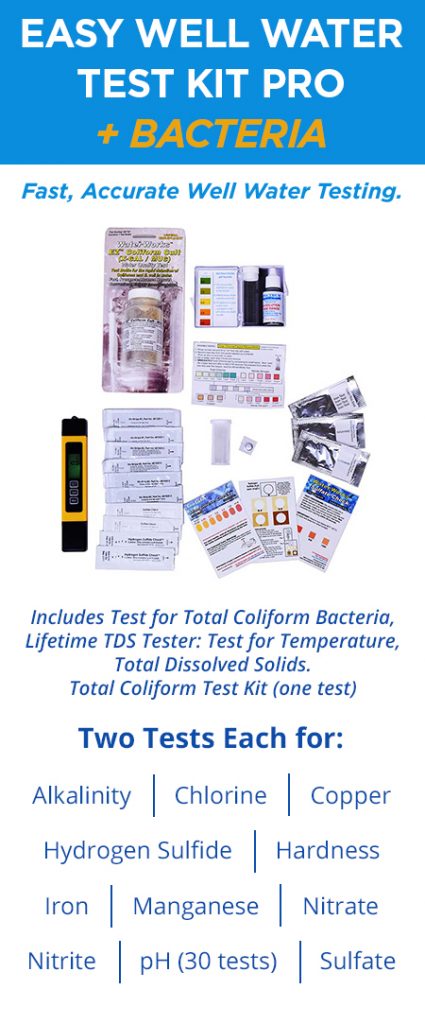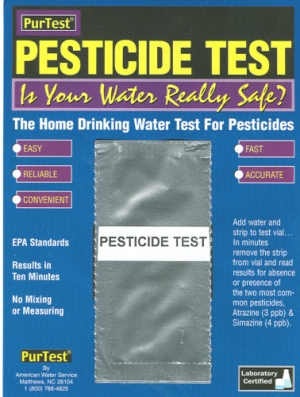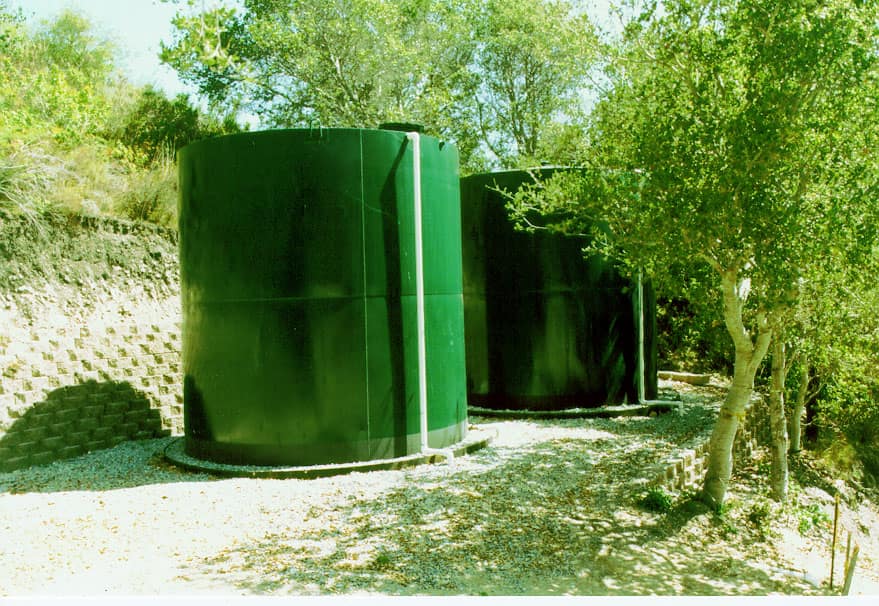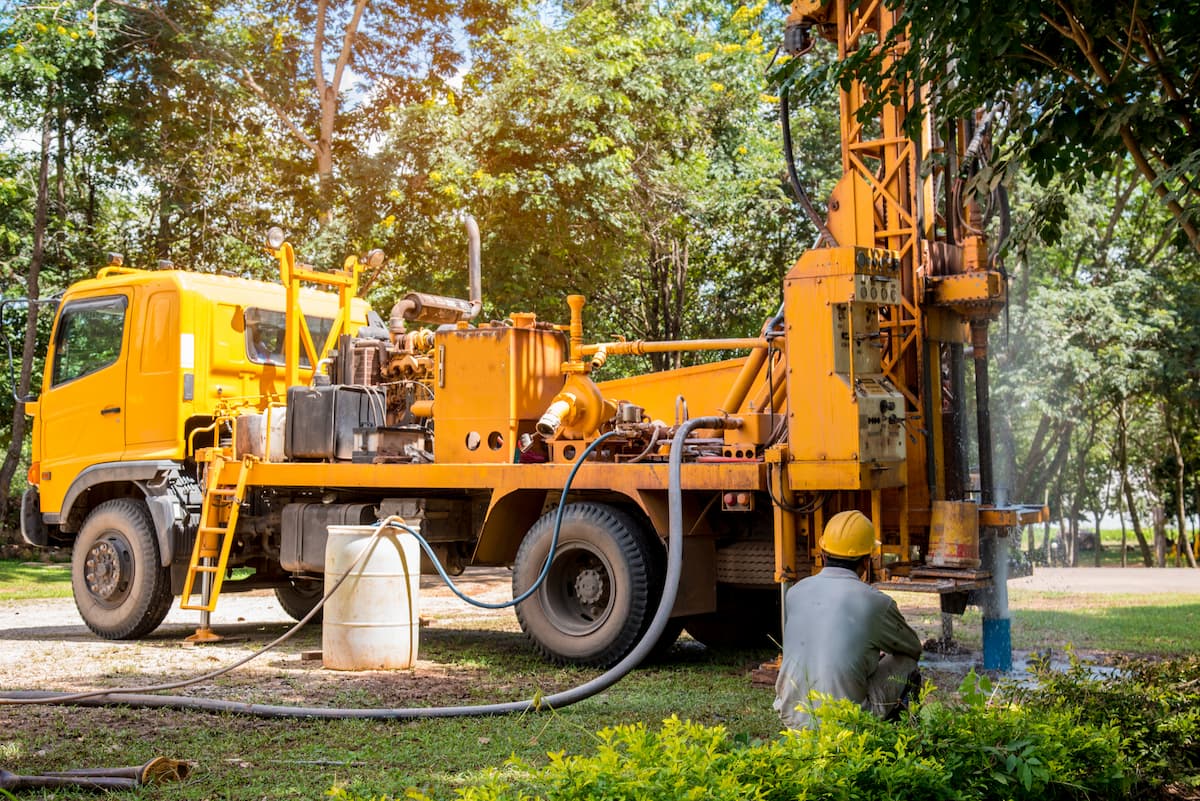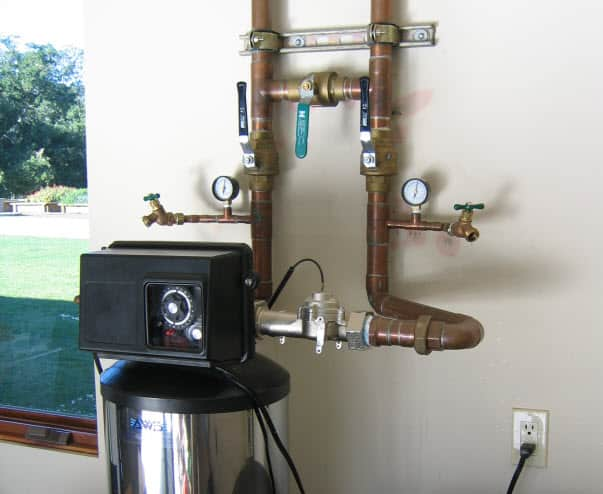Well Water Water Testing
Well Water Test Kits: A Guide to Water Testing
Many well water test kits and labs are available for the home water well owner, including some tests you can do yourself quickly and accurately in the privacy of your own home. These test kits are designed for convenience and effectiveness, ensuring they target critical contaminants.
If you already understand your water is safe but are attempting to solve a specific well water problem such as staining, odors, or corrosion, a home test kit can provide fast results at a fraction of taking the sample into a water testing lab. These kits can also help address specific concerns, such as microbial contamination, bacteria, protozoa, and other pathogens.
For serious contamination issues or complex problems such as toxic chemicals or metals, your local county health department can recommend some local labs to do the testing for you, or you can send in your sample to a certified water testing lab such as National Testing Labs. It is important to return the sample promptly for accurate results.
Users can schedule a time for a representative to collect their water samples.
Why Should I Test My Well Water?
Municipal city water systems are required to test their water supplies regularly to ensure the water is safe to drink. However, a private well does not require testing except for bacteria when it is first drilled or the pump is changed. You are responsible for making sure your water is safe.
Most private wells provide a clean, safe supply of water; however, contaminants can pollute private wells, and unfortunately, you cannot see, smell, or taste most of them.
Consequently, you should test your well water regularly. The decision on what to test your water for should be based on the types of land uses near your well.
What Tests Should Be Done?
A general mineral analysis that includes nitrate plus coliform bacteria is a good place to start. These may include:
- Alkalinity
- Bacteria
- Copper
- Hardness
- Hydrogen Sulfide
- Iron
- Manganese
- Nitrate
- Nitrite
- pH
- Sulfate
- Total dissolved solids
If you live near gas stations, industry, agricultural areas, or a major highway, you would also want to test for organic compounds, heavy metals, pesticides, and herbicides.
General Minerals
A general mineral test will include calcium, magnesium, chloride, nitrate, potassium, and sodium, along with metals such as iron and manganese.
If you are experiencing stains or sediment, a general mineral analysis will tell you what is causing the problem. If the water has a funny taste or odor, a general mineral analysis of bacteria will usually tell you what is causing the problem.
These tests show if the water will corrode pipes or form mineral scale and the levels of minerals and salts. If you are having problems with water color or brown staining, additional tests for tannin are recommended.
Coliform Bacteria
Coliform bacteria live in soil, on vegetation, and in surface water. Coliform bacteria found in the intestines of warm-blooded animals and their feces are called E.coli. Some strains of coliform bacteria can survive for long periods in soil and water and can be carried into well casings by insects.
Coliform bacteria are the most common contaminants found in private water systems. Private wells should be tested at least once a year for bacteria. However, bacteria are only one of many possible contaminants.
Lead and Copper
Testing for lead and copper should be done on “first draw” water that has been stagnant in the distribution pipes for at least six hours. If lead and copper levels are high due to plumbing, they can usually be reduced to acceptable levels by flushing the faucet for a minute or two before collecting water for drinking.
Nitrates
Nitrate forms when nitrogen from fertilizers, animal wastes, septic systems, municipal sewage sludge, decaying plants, and other sources are combined with oxygenated water. In infants under six months of age, nitrate exposure can cause a serious condition called methemoglobinemia or “blue-baby syndrome.”
Infants with this condition need immediate medical care because it can lead to coma and death. Test for nitrate if a pregnant woman or infant is drinking water.
If you live within ¼ miles of a corn, soybean, or vegetable field, you should regularly test your water for nitrate.
Well owners should test for nitrate regularly if their well is located near an area where fertilizers are manufactured or handled, an animal feedlot, or a manure-storage area.
Solvents, Gas, and Oil
Household and industrial solvents, gasoline, and fuel oil are examples of volatile organic chemicals (VOCs). Some VOCs are relatively non-toxic, while others can cause cancer, birth defects, and reproductive problems. Fuel oil and gasoline can enter groundwater as a result of a leaking storage tank or spill.
Wells located within ¼ miles of an active or abandoned gasoline station, home or farm fuel tank, or bulk storage tank have about a 25% chance of being contaminated and should be tested at least once for pVOCs (VOCs from petroleum products).
Paint thinners, dry cleaning chemicals, and industrial solvents can enter groundwater from spills, improper disposal, leaking storage tanks, and landfills. Wells located within ¼ miles of a landfill, dry cleaner, auto repair shop, or industrial site where solvents have been used should be tested for VOCs.
Because solvents, gasoline, and fuel oil are common in our environment, all private well owners should consider having their water tested for VOCs at least once.
Pesticides and Herbicides
Pesticides are chemicals used to control weeds and insects. Some have entered groundwater as a result of their use on farm fields, and others have been found in groundwater following spills and improper disposal.
Long-term use of drinking water that contains pesticide residues may increase your risk of developing cancer or other serious health problems.
If your well is located within close proximity to a corn, soybean, or vegetable field, you should test its well water for pesticides.
You should also consider a pesticide test if your well is within less than a mile of where pesticides are manufactured or used. Well owners who are uncertain about the use of pesticides in their area may also want to consider having their water tested at least once.
Understanding Water Testing
Water testing is the process of analyzing water samples to determine their quality and safety for human consumption. It involves collecting water samples from a source, such as a well or municipal water supply, and sending them to a laboratory for analysis. The lab tests the water for various contaminants, such as bacteria, viruses, and chemicals, and provides a detailed report on the results.
Water testing is crucial because it ensures that the water we drink is safe and free from harmful contaminants. Contaminated water can cause a range of health problems, from mild gastrointestinal symptoms to life-threatening illnesses. By testing our water regularly, we can identify any potential problems and take steps to address them.
There are several types of water tests available, including:
- Bacterial tests: These tests detect the presence of bacteria, such as E. coli and Total Coliform, in the water.
- Chemical tests: These tests detect the presence of chemicals, such as lead and arsenic, in the water.
- Physical tests: These tests measure the physical properties of the water, such as its pH and turbidity.
Regular water testing helps ensure that your drinking water is safe and allows you to take corrective actions if contaminants are found. Understanding the results and what steps to take can protect your health and your family's health.
Why Test Your Well Water
Testing your well water is crucial to ensure the health and safety of your family. Well water can be contaminated with various substances, including bacteria, viruses, and chemicals, which can cause serious health problems. Regular water testing can help identify potential contaminants and allow you to take corrective action to ensure your water is safe to drink. Testing your well water can also help you identify any issues with your well or plumbing system, allowing you to make necessary repairs or maintenance to prevent future problems. Using current testing methods is essential to ensure the most accurate and up-to-date water quality assessment.
Choosing the Right Water Test Kit
Choosing the right water test kit can be overwhelming, but selecting a kit that meets your specific needs is essential. Consider the type of contaminants you want to test for, the size of your well, and the frequency of testing. Look for a kit that includes a comprehensive range of tests, including bacteria, nitrates, and lead. Also, consider the cost and ease of use of the kit. Some kits may require you to collect multiple samples, while others may require you to send the sample to a lab for analysis. Be sure to read reviews and do your research before selecting a kit. Test kits are sent in the order in which requests are received.
Collecting a Water Sample
Collecting a water sample is a crucial step in the water testing process. To ensure accurate results, following the instructions provided with your test kit is essential. Typically, you’ll need to collect a sample from a faucet used for drinking and cooking. Make sure to run the tap for several minutes to clear the water from the pipes before collecting the sample to ensure you’re getting a representative sample of your well water. Use the provided bottle and follow the instructions for collecting and storing the sample. Be sure to label the sample and include any required information, such as the date and time of collection.
How to Use a Water Test Kit
Using a water test kit is a simple and convenient way to test your drinking water. Here’s a step-by-step guide on how to use a water test kit:
- Choose a water test kit: Many different types of water test kits are available, so choose one that meets your needs. Consider the type of contaminants you want to test for and the level of accuracy you need.
- Collect a water sample: Collect a water sample from your drinking water source, such as a faucet or well. Follow the instructions provided with the test kit for collecting the sample. Typically, you’ll need to flush the pipes before collecting the sample to ensure you’re getting a representative sample of your well water.
- Prepare the sample: Prepare the sample according to the instructions provided with the test kit. This may involve adding a preservative or mixing the sample with a reagent.
- Send the sample to the laboratory: Send the prepared sample to the laboratory for analysis. Follow the instructions provided with the test kit for shipping the sample. Proper packaging and timely shipping are crucial for accurate results.
- Receive the test results: The laboratory will provide a detailed report on the contaminants found and their levels. Review the results to determine if your water is safe to drink.
Using a water test kit allows you to monitor your water quality regularly and take action if any contaminants are detected. It’s a cost-effective and efficient way to ensure safe drinking water.
Understanding Your Water Test Results
Understanding your water test results can be confusing, but knowing what the results mean is essential. In this context, ‘means' refers to understanding the implications of the specific results and actions you need to take based on those results. Look for the following information in your test results:
- Contaminant levels: Check to see if any contaminants were detected in your water sample. Compare the levels to the maximum allowable levels set by the EPA.
- pH levels: Check to see if your water is acidic or alkaline. pH levels outside the recommended range can affect the taste and quality of your water.
- Bacteria levels: Check to see if any bacteria were detected in your water sample. Bacteria can cause serious health problems, so it’s essential to take corrective action if bacteria are present.
Water Quality Parameters
Water quality parameters are the characteristics of water that are measured to determine its quality and safety. Some common water quality parameters include:
- pH: The pH of water measures its acidity or alkalinity. A pH of 7 is neutral, while a pH below 7 is acidic, and a pH above 7 is alkaline. The pH level can affect the taste of the water and its interaction with plumbing materials.
- Turbidity: Turbidity measures the clarity of water. High levels of turbidity can indicate the presence of suspended solids or other contaminants. Turbid water can harbor harmful microorganisms and affect the effectiveness of disinfection processes.
- Total Dissolved Solids (TDS): TDS measures the concentration of dissolved solids in water. High levels of TDS can indicate the presence of contaminants such as salts or minerals. While not all dissolved solids are harmful, high TDS levels can affect the taste and quality of the water.
- Bacteria: Bacteria are microorganisms that can be present in water. Some types of bacteria, such as E. coli, can be harmful to human health. Regular testing for bacteria is essential to ensure the water is safe to drink.
- Chemicals: Chemicals, such as lead and arsenic, can be present in water and can be harmful to human health. Testing for these chemicals helps identify potential health risks and allows for appropriate treatment measures.
Understanding these water quality parameters helps you assess the safety and quality of your drinking water. Regular testing and monitoring can help you maintain a safe water supply.
Common Well Water Contaminants
Well water can be contaminated with a variety of substances, including:
- Bacteria: Bacteria can cause serious health problems, including diarrhea, vomiting, and stomach cramps.
- Nitrates: Nitrates can cause blue baby syndrome in infants and affect adults' health.
- Lead: Lead can cause serious health problems, including brain damage and developmental delays.
- Fluoride: Fluoride can cause dental problems and other health issues if consumed in excess.
Maintaining Your Well’s Water Quality
Maintaining your well’s water quality requires regular testing and maintenance. Here are some tips to help you keep your well water safe:
- Regularly test your well water for contaminants and bacteria.
- Keep your well and plumbing system in good repair.
- Avoid using harsh chemicals or fertilizers near your well.
- Consider installing a water treatment system to remove contaminants and improve the taste and quality of your water.
- Keep your well cap secure to prevent contamination from surface water.
When sending your water samples for testing, securely package the sample and either drop off the package at a FedEx location or schedule a pickup.
Additional Resources
For more information on drinking water quality and safety, consider visiting the following resources:
- Environmental Protection Agency (EPA): The EPA provides information on drinking water quality and safety, including water testing and treatment guidelines. Visit their website at EPA Drinking Water.
- Centers for Disease Control and Prevention (CDC): The CDC provides information on waterborne diseases and the importance of water testing. Visit their website at CDC Water-Related Diseases.
- National Sanitation Foundation (NSF): The NSF provides water testing and treatment information, including certification programs for water treatment products. Visit their website at NSF International.
- Water Quality Association (WQA): The WQA provides water testing and treatment information, including certification programs for water treatment professionals. Visit their website at WQA.

